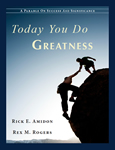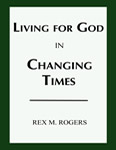A few years ago I set out to visit each of the 13 officially recognized United States presidential museums and libraries. I’ve written earlier about the first six museums I’ve visited. Now it’s time to update the list.
Lyndon Baines Johnson Library and Museum – LBJ’s museum is located on campus, University of Texas, Austin, a short walk from the Longhorns’ football stadium. The building is a “tall square,” white, and set within a large granite plaza dedicated to former First Lady, Lady Bird Johnson. Given the length of LBJ’s political career there’s a fair amount of memorabilia on display.
Like nearly all presidential museums a reproduction of the Oval Office is in the exhibit featuring original furnishings and the unique (developed for the president’s own tastes) oval rug. Unlike other museums, in this one you can sit in the office chair, which I did, and for a donation a nearby staff member will take your picture. Mine turned out pretty good.
Lady Bird was one of LBJ’s assets. First, there’s that memorable nickname. Then there’s her vision and accomplishment in beautifying America’s roadways. Finally there’s the fact she outlived him and was able to bolster LBJ’s reputation and legacy. The item in the museum I liked most was a hand-written letter from Lady Bird to LBJ expressing her confidence in his ability to lead in the wake of JFK’s assassination. It’s impressive. Mrs. Johnson’s office with a view of downtown Austin within the museum and library complex, which after LBJ’s passing she actually frequently used, is an added bonus, particularly seeing how she filed her completed work on the floor.
I did not emotionally bond with this museum, even though it reflected the times of my life. Main reason, I never emotionally bonded with the man when he was living. I didn’t share most of his politics and, like many, strongly disliked his micromanagement and misconduct of the Viet Nam War. In my estimation President Johnson and his advisors did not fight to win.
One profound issue position on which I did side with LBJ is racial reconciliation, which is to say the Civil Rights Act of 1964 and the Voting Rights Acts of 1965. The images in the museum of the Civil Rights Movement are as compelling as the Viet Nam War images are repelling.
George Bush Presidential Library and Museum – George H. W. Bush, “41” placed his large museum and library complex on the Texas A&M University campus in College Station, Texas. LBJ located his museum on the campus of the state’s most powerful university blocks from the Texas State Capitol and government district. Bush located his on the campus of the state’s premier military-related university...in the boonies.
Except for Texas A&M families, people won’t just “drop by on the way to somewhere.” They’ll have to make a special trip to see the museum. I understand Mr. Bush’s comfort zone with the military culture of the campus, but I think his museum will suffer for being where it is.
But it is a beautiful museum, features large and interesting presentations, including the story of Bush’s plane being shot down in WWII, his floating in the Pacific, and his rescue as yet a teenager, now a war hero—on film no less. The museum is large and it shares a lot about the Bush family over 3-4 generations.
Bush was known at one time as “Mr. Resume,” a cagey way of referring to his notable accomplishment of holding one key political appointment after another—Congressman, US Ambassador to UN, Republican Party National Committee Chairman, Chief Liaison of US to China, Director of CIA, Vice President, President. All of these experiences are accessible in the museum, and outside there’s a large running horses sculpture that fits south central Texas. I enjoyed the museum, just not its location.
John F. Kennedy Presidential Library and Museum – The Kennedy Museum and Library, which JFK never saw, is attractively located in Boston, Massachusetts on a point of land at the edge of the University of Massachusetts campus bordering on the bay on two sides.
Aside from the view of the water I found JFK’s museum disappointing. It’s not as dated in its look as the Eisenhower Museum, but it’s close. It needs a renovation, and more than that, it should display far more memorabilia, video, and other remembrances. For the impact former First Lady Jacqueline Kennedy made, for example, there is relatively little about her in the museum—the requisite family pics and two gowns, but that’s about it. For as stylish as she was you’d think there’d be several gowns, etc.
The best presentation dealt with the Cuban Missile Crisis of October 1962. But oddly absent, or at least I didn’t see it, is any in-depth consideration of the failed Bay of Pigs invasion of April 1961.
The events surrounding the assassination are portrayed in a short hallway on about 10-inch black and white monitors. That’s it. I understand why the Kennedy family may not want to feature that horrible day and its aftermath in November 1963. But this incredible story is summarized in a couple of TV tapes and Walter Cronkite’s announcements. Nothing more.
I didn’t bond with this president. Not much about his politics, nor his lifestyle fit, in my universe. But I was in 6th Grade when he was killed and like most Americans I can remember where I was when I heard the news—on the playground. And days later I was watching when Jack Ruby shot and killed Lee Harvey Oswald on live national television. For the significance of these events, for the incredible number of books that have been written about Camelot and its untimely end, for these events’ continuing importance, they could occupy a huge room, not a small exit hallway. These events literally changed our nation and in my estimation demand considerably more than the JFK Museum is presenting.
The George W. Bush Presidential Center is yet in development in Dallas at Southern Methodist University, former First Lady Laura Bush’s alma mater. Of course a Barack Obama Presidential Library and Museum will not be built for President Obama until he finishes his presidency.
Aside from these contemporaries, I have Hoover, FDR, and Clinton yet to go.
© Rex M. Rogers – All Rights Reserved, 2012
*This blog may be reproduced in whole or in part with a full attribution statement. Contact Rex or read more commentary on current issues and events at www.rexmrogers.com or follow him at www.twitter.com/RexMRogers.


